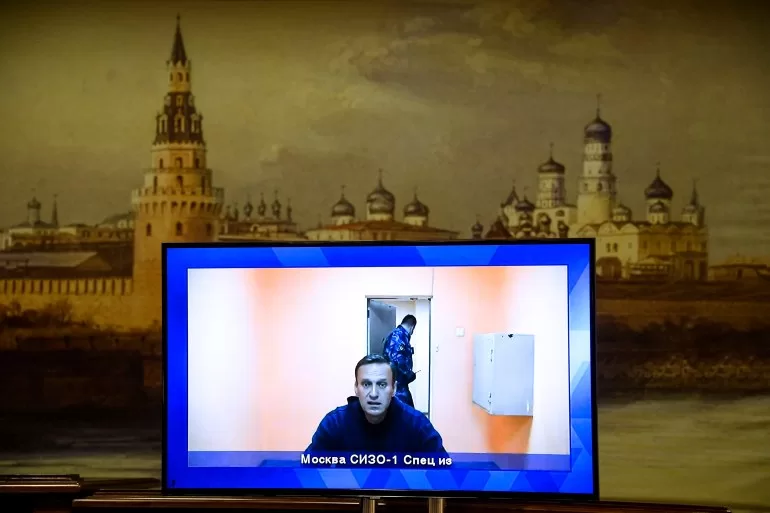He was 47 and died on Friday in IK-3, one of Russia’s northernmost prisons.
The lawyer and securities expert, who used to live with his wife, Yulia, and two children, Daria and Zahar, in a drab concrete high-rise in southeastern Moscow, rose to fame in the late 2000s by exposing the graft of top officials, including Putin.
“Putin is the man who steals Russia’s future. I am taking part in this election to fight him,” Navalny said in 2017 when announcing his decision to run for president.
“Under [Russia’s first democratically elected president, Boris] Yeltsin, corruption was problematic. Under Putin, it became systemic,” he wrote in 2012.
First as a lone LiveJournal blogger and gradually with a team of researchers and producers, Navalny released dozens of investigations backed with bank records, leaked documents, maps, blueprints of properties, photos and drone footage.
These reports identified and described how the country’s small elite lived in palaces in Russia and luxurious real estate abroad. He exposed their foreign passports and multibillion-dollar assets, their families’ unexpected wealth and well-paid jobs in Kremlin-controlled corporations.
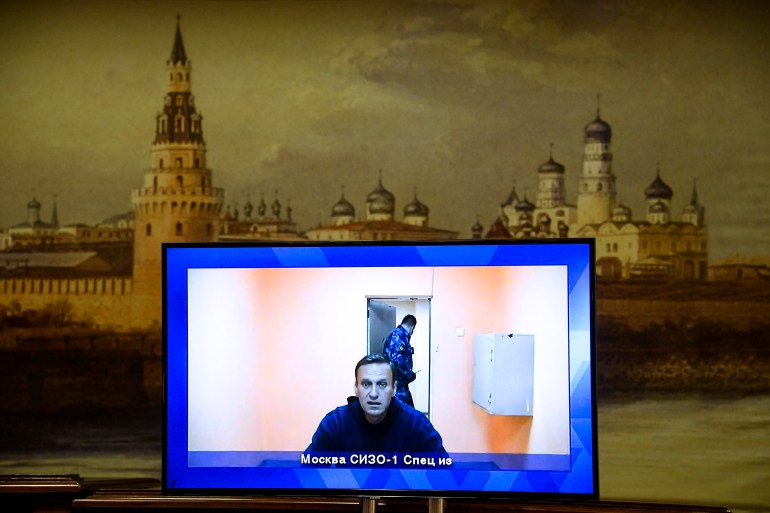
His team disseminated the exposes via social networks, creating an online alternative to the Kremlin-backed media that dominate Russia.
Millions subscribed to his YouTube channel, and the videos, often with Navalny as a presenter, were seen tens of millions of times.
They also won professional praise.
“I think there is a very high level of storytelling, dramatically and visually,” Askold Kurov, who filmed and co-produced Welcome to Chechnya, an award-winning HBO documentary, told Al Jazeera, describing Navalny’s documentary about a $1.35bn palace allegedly built for Putin.
Released in January 2021, the 113-minute film, called Putin’s Palace, was seen by hundreds of millions of people.
Meanwhile, Navalny’s Fund to Fight Corruption recruited hundreds of grassroots activists who “incited”, according to police, dozens of protests across Russia’s nine time zones.
Even though the rallies triggered thousands of arrests, hundreds of trials and dozens of attacks and convictions, many protesters kept coming back, seeing Navalny as a catalyst for change – without necessarily agreeing with his ideas.
“When asked, ‘Navalny or Putin?’ this is a strange question. In fact, we don’t have any choice. And that’s why Navalny is part of the force that demands this freedom of choice,” Aleksandr Siriskin, a Moscow-based actor who was sentenced to seven days in jail for taking part in a pro-Navalny rally in January 2021, told Al Jazeera.
Less visible but no less effective were Navalny’s online projects that used crowdsourcing to identify corruption in thousands of government contracts, monitor regional and local elections, form trade unions of underpaid government employees and file legal complaints about potholed roads and leaking roofs.
Kremlin-controlled media responded to Navalny’s investigations and popularity by branding him a “traitor”, a “NATO spy” and even a “political pedophile” who “lures” teenagers to rallies.
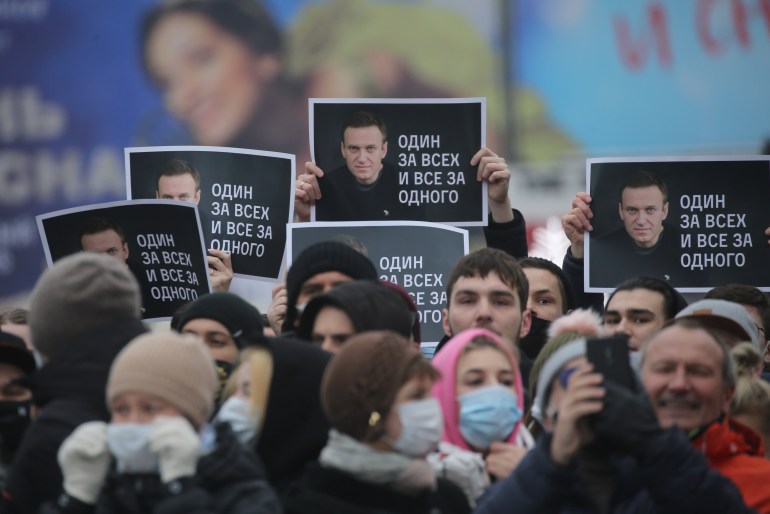
The negative coverage seemed to have worked.
Only 19 percent of Russians approved of Navalny’s work and 56 percent disapproved of what he did, according to a February 2021 survey by the Moscow-based Levada Center polling organisation.
Russians “get irritated when Alexey Navalny or someone else disturbs the habitual worldview. It even boils down to the transformation of passive conformism into aggressive rejection of all groups that confront the state”, Andrey Kolesnikov of the Moscow Carnegie Center, a think tank, wrote about the poll.
‘That character’
Putin, symbolically or superstitiously, never uttered Navalny’s name, calling him instead “that character”, “the aforementioned citizen”, a “sick man” and a “protege” of US intelligence agencies.
“I’m like Lord Voldemort. Putin cannot say my name out loud,” Navalny told this reporter in 2018, referring to the main villain in the Harry Potter novels and movies. He was standing in his Moscow office that had just been raided by police, who took away laptops, documents, leaflets and handouts.
After the 2015 shooting death of charismatic opposition leader Boris Nemtsov, most of Putin’s critics gravitated towards Navalny.
“He is supported by both the youngsters who saw nothing but Putin’s rule and who have no economic or political future under the current system as well as of those who didn’t become beneficiaries of Yeltsin’s and Putin’s eras,” Pavel Luzin, an analyst with the Jamestown Foundation, a think tank in Washington, DC, told Al Jazeera.
Navalny’s current supporters include some former critics of his nationalist stance.
Beginning in the late 2000s, Navalny used racial slurs when describing ethnic Georgians, called for the deportation of Muslim migrant workers and delivered speeches at Russian Marches, annual rallies of far-right nationalists, white supremacists and neo-Nazis.
“It was a long time ago,” Alexander Verkhovsky, head of the Moscow-based Sova hate crimes monitor, told Al Jazeera in 2021, describing Navalny as “a different man now”.
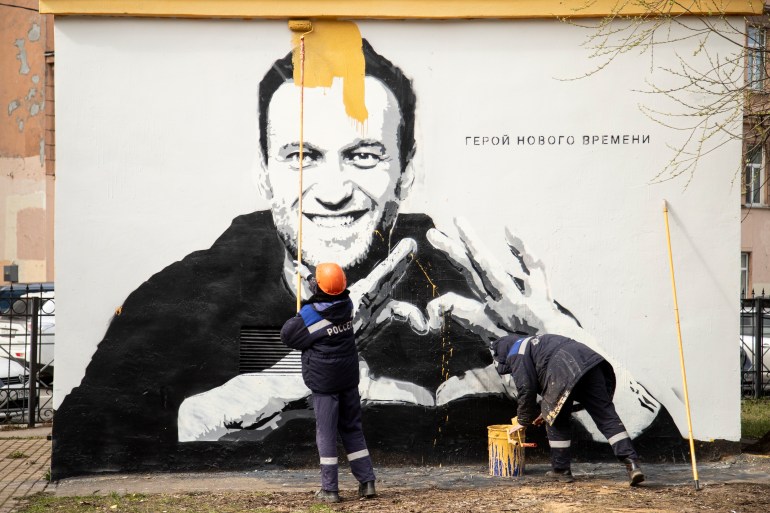
Navalny coined characterisations that became instant viral memes. The ruling United Russia party was a “party of crooks and thieves”, Putin “a grandpa in the bunker”. His misfortunes, including arrests and suspected poisonings, generated popular jokes, a badge of honour in Russia, where political humour is often as dangerous as “serious” dissidence.
But to the Kremlin, he was no joke. It orchestrated – according to Navalny, independent lawyers and human rights groups – his unending persecution and “fabricated” trials.
In 2013, he was sentenced to five years in prison for embezzling $500,000 from a timber company, but the judge replaced it with a suspended sentence after the ruling sparked massive protests. The European Court for Human Rights ordered Russia’s Supreme Court to dismiss the sentence in 2016.
A year later, a court handed Navalny another five-year suspended sentence – meaning election officials could not register him as a presidential candidate to run against Putin, who was up for his fourth term.
From 2011 to 2018, Navalny was sentenced to 15 or 30 days of jail 10 times – and joked that he was “serving the sentence piecemeal”.
And then, there were the attacks.
He was whipped by Cossacks in 2016, almost lost an eye after being doused with a green chemical in 2017 and had severe swelling after a 2019 arrest that he said was caused by a poison.
But it was the events of August 20, 2020, that really caught the world’s attention. Navalny became ill on a domestic fight to Moscow, fell into a coma and was eventually flown to Germany for medical treatment.
Western experts and governments said Navalny was poisoned with a weapons-grade nerve agent.
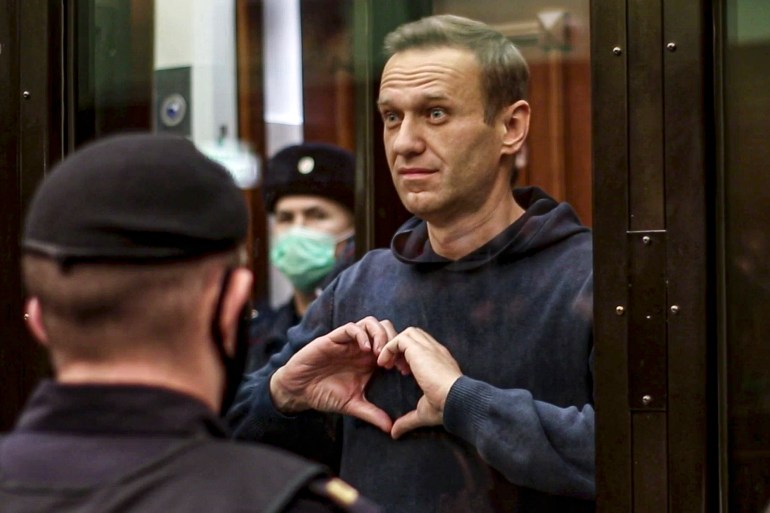
A joint investigation by The Insider, Bellingcat, CNN and Der Spiegel found that Putin had commissioned the poisoning by a team of intelligence officers.
After he recovered, Navalny said he called one of those officers and released a recording of their conversation. Navalny identified himself as a security official and asked about his own poisoning – about where the nerve agent was applied – and the man Navalny identified as Konstantin Kudryavtsev is heard replying, “The insides, the crotch.”
The Kremlin dismissed and derided the report.
“The patient has megalomania and delusion of persecution,” Putin spokesperson Dmitry Peskov said.
Critics argued the Kremlin’s reluctance to investigate the poisoning gave away Putin’s complicity in the poisoning.
“If [the poisoning] went against Putin’s will or sanctions, why didn’t he fire anyone? Why didn’t he order an investigation to find and punish the culprits?” Gennady Gudkov, a former intelligence officer and lawmaker who is now an opposition leader, told Al Jazeera.
Navalny returned to Moscow in January 2021 after recovering from the poisoning only to be detained at the airport and sentenced to two and a half years in prison for violating the parole of a 2017 suspended sentence. He was sent to a penal colony in the Vladimir region known for its harsh treatment of inmates, some of whom reportedly faced torture and rape.
He called it a “real concentration camp”.
A little more than a year after his return to Russia, Russian troops invaded Ukraine and his cause received less global attention. He was handed another nine years in prison in 2022 for embezzlement and contempt of court. He dismissed all the charges against him as trumped up.
His team posted his messages from prison and regular updates on his Twitter accounts. He decried the Ukraine war from jail, where he was pictured looking gaunt and was reported to be seriously ill. In July last year, he said prison guards made him listen to a Putin speech 100 times.
